(This list is not all-inclusive. It only shows those changes that will impact faculty the most. The date the updates will take place changes from month to month. You can expect the following updates to be in place by the end of the month.)
Announcements – Display author information
To provide more information to users, Announcements now supports displaying author information (name and timestamp) on new and edited announcements.
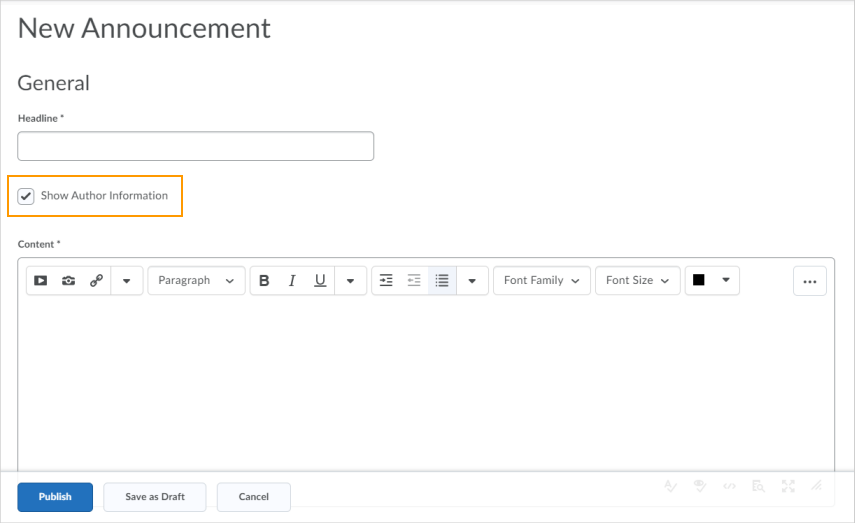
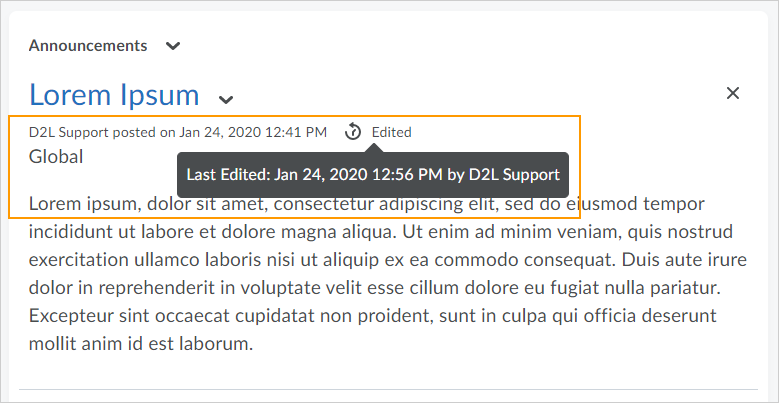
Groups – Set exact time learners can self-enroll
When setting up groups that allow learners to self-enroll, instructors can now add an exact time when enrollment opens, and an exact time when self-enrollment expires. Previously, instructors could only set the date when enrollment opened or expired.

Learning Outcomes – Improved ability to navigate Outcome Alignment picker
To increase the value of the Learning Outcomes features, the learning outcomes tree can be collapsed into a hierarchy to facilitate finding and using specific groups of related outcomes.
From the Learning Outcomes list, the user can click on the highest-level outcomes to expand and reveal the child nodes within that outcome. Within the child nodes, administrators and instructors can select one or more leaf-node outcomes to align to their course activity or content page. This nested outcome hierarchy also appears for learners in the Outcomes progress. Each child node displays the typical mini-trend for the progress of outcomes within the node. When a user clicks a specific outcome, the outcomes progress details page appears.
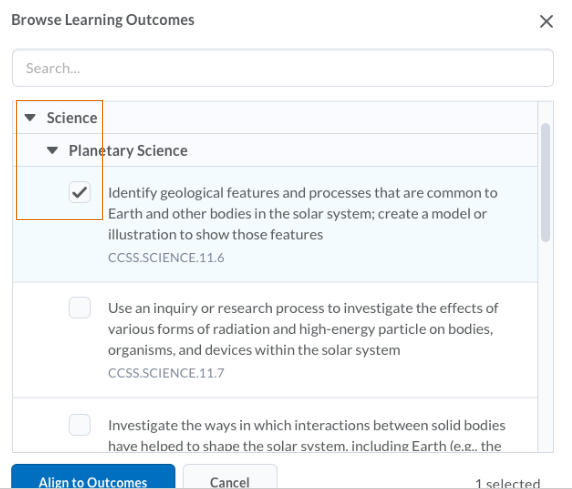
Rubrics – Confirmation message for partially unevaluated rubrics
To prevent publishing partially unevaluated rubrics, the publishing workflow in the new Rubrics grading experience now includes a confirmation message that warns users when the rubric is not fully evaluated. Instructors have the option to continue publishing, or cancel. Warning messages appear when publishing a rubric for an individual student and when bulk publishing rubrics. Users attempting to publish an incomplete rubric evaluation must now click Publish to complete the workflow.
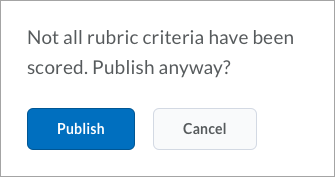

Rubrics – Improved accessibility in Rubric grading
In Rubrics, when using keyboard navigation to tab to a row of selectable cells, there is now a focus indicator to help orient users on the page.
Rubrics – Manually map achievement levels to Rubric levels
You can now manually map achievement levels to Rubric levels for all types of rubrics. Previously, achievement levels were automatically mapped to points-based or custom points-based rubrics. This feature enables you to override the percentage scale alignment with respect to an individual rubric if you choose to do so. This feature only appears when the scale has percentage values defined and is only enabled for points and custom point-based rubrics. For no score rubrics, the threshold marker placement is suggested and adjustable since there is no score calculation in the rubric.
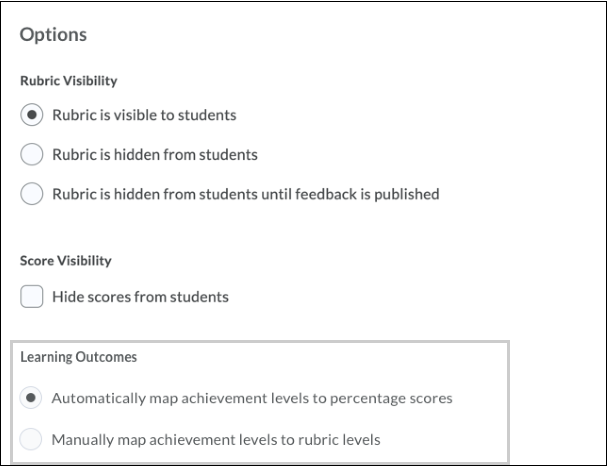
Rubrics – Overall Score levels calculated after rubric criteria completion
In the new Rubrics grading experience, the Overall Score level is now only calculated after all the criteria in the rubric have been assessed. This change optimizes rubric performance by eliminating the calculation of incomplete Overall Score levels until the rubric evaluation is completed, and improves the grading experience for instructors and rubric evaluators.
